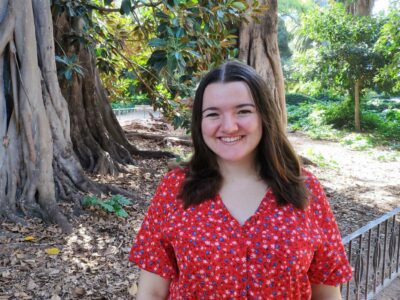
A meeting between Armenian Prime Minister Nikol Pashinyan, the President of European Council Charles Michel, and President of Azerbaijan Ilham Aliyev in Brussels. Photo credit, Presidential Administration of Azerbaijan. Licensed under CC-BY-4.0
Empty store shelves, people on the brink of starvation, and a region on the brink of yet another massive humanitarian crisis. Nagorno-Karabakh and its residents have once again been cut off from essential supplies after Azerbaijan suspends road traffic on the only road linking Armenia and Nagorno-Karabakh. For months, between December 2022 and April 2023, environmentalists from Azerbaijan — allegedly linked to the government — were blocking the Lachin Corridor, the only route connecting Armenia to Karabakh across the territory of Azerbaijan. Then on April 28, 2023, the so-called “eco-activists” suspended their blockade following the installation of an Azerbaijani border checkpoint on the corridor. However, since mid-June, no supplies have been allowed past the Azerbaijani checkpoint, and gas supplies have been once again cut off from the region. Azerbaijan has also blocked International Red Cross vehicles from entering the region, citing “contraband” prevention measures. On July 14, thousands of Armenians gathered in Stepanakert (Khankendi in Azerbaijani), Nagorno-Karabakh's capital, and marched to the ICRC office in the city and the Russian peacekeeper base on the city’s outskirts, reported OC Media.
Lachin blockade
Armenia and Azerbaijan may have fought a war two years ago and signed an agreement to end hostilities, but tensions between the two countries over the Karabakh region linger. When the blockade began in December, at first, the protesters demanded Armenia stop the illegal mining in Karabakh and prevent the transfer of minerals into the country. However, in the following days, the demands changed. According to reporting by Radio Liberty at the time, the protesters’ demands changed to “Baku establish control over the Lachin Corridor.”
The border checkpoint set up by Azerbaijan is viewed as a way to better facilitate the blockade of Nagorno Karabakh. Azerbaijan holds the upper hand in screening any vehicle traveling between Armenia and Nagorno Karabakh. Reports that residents were being screened by the Azerbaijani border troops emerged on May 1. According to reports, footage appeared to show Armenian vehicles passing through the checkpoint, with Azerbaijani border control officers inspecting their vehicles and documents.
“The people are from villages near the checkpoint under double blockade and were traveling with the support of peacekeepers, with guarantees of not being bothered,” wrote Artak Beglaryan, an adviser to the State Minister, on Twitter at the time when the checkpoint was set up.
The most recent blockade has left some 120,000 local Armenians cut off from supplies, causing severe shortages:
This elderly woman suffers serious health issues, can’t walk long distances. Due to absence of fuel, there’s no public transportation, leaving her no choice but to walk to find some food. 20,000 elderly civilians go through immense daily suffering due to Azerbaijan’s blockade. pic.twitter.com/tRMmjyXDGJ
— Siranush Sargsyan (@SiranushSargsy1) July 18, 2023
According to reporting by Eurasianet, since July 18, “public transportation services were cut to a bare minimum — only 2.4 percent of the pre-blockade volume.”
Peace talks
On July 15, leaders of Azerbaijan and Armenia met in Brussels in talks mediated by the European Council. This was the sixth such meeting that has taken place since the two nations fought a 44-day war in 2020. In June, their foreign ministers convened at a meeting in Washington, DC.
It was an honor to host Azerbaijani Foreign Minister @Bayramov_Jeyhun and Armenian Foreign Minister @AraratMirzoyan at our beautiful new @FSIatState campus. Pleased with the progress made and optimistic an agreement is within reach. pic.twitter.com/rLOIwvagmM
— Secretary Antony Blinken (@SecBlinken) May 4, 2023
In Brussels, following the meeting between the leaders of both countries, the President of the Council of Europe, Charles Michel, said in a statement, “I commended the leaders for their strong commitment to the peace process and encouraged them to take further courageous steps to ensure decisive and irreversible progress on the normalization track.”
But while the leaders discussed some of the pressing points of reaching a final peace deal, there has been little sign of progress on the “most difficult issue — the fate of ethnic Armenians in Nagorno-Karabakh,” wrote Olesya Vartanyan, an analyst with the International Crisis Group, an independent organization that works to prevent wars and shape policies.
The Nagorno-Karabakh area has been under the control of its ethnic Armenian population as a self-declared state since a war fought in the early 1990s, which ended with a ceasefire and Armenian military victory in 1994. In the aftermath of the first war, a new, internationally unrecognized, de facto Nagorno-Karabakh Republic was established. Seven adjacent regions were occupied by the Armenian forces. As a result of that war, “more than a million people had been forced from their homes: Azerbaijanis fled Armenia, Nagorno-Karabakh, and the adjacent territories, while Armenians left homes in Azerbaijan,” according to the International Crisis Group. Following the second Karabakh war in 2020, Azerbaijan regained control over much of the previously occupied seven regions. Azerbaijan also captured one-third of Karabakh itself during the war. On November 10, 2020, Armenia and Azerbaijan signed a ceasefire agreement brokered by Russia.
According to Vartanyan, although significant progress was made in talks between the two nations in light of Armenian leadership's “significant concessions” since the end of hostilities in 2020, the fate of ethnic Armenians in Nagorno-Karabakh remains unclear. “Armenia is insisting it includes special rights and ensures the security of Nagorno-Karabakh’s Armenian population. International mediators also want special measures due to decades of conflict and the recent 2020 war that claimed over 7,000 lives in just six weeks,” wrote the analyst.
Azerbaijan has yet to produce a document outlining its next steps regarding the ethnic Armenian population. Speaking to Reuters, Azerbaijan's Foreign Minister Jeyhun Bayramov said guarantees for ethnic Armenians were not negotiable as this would amount to interfering with Azerbaijan's internal politics. “This is an internal, sovereign issue. The Azerbaijan constitution and a number of international conventions to which Azerbaijan is party provide all the necessary conditions in order to guarantee the rights of this population,” said Bayramov.
In an interview with Politico, Tigran Grigoryan, a political analyst and the director of the Regional Center for Democracy and Security in Yerevan, said if faced with a choice, the local Armenian population will “choose to leave” rather than “accept [Azerbaijani] passports.”
A recent International Crisis Group report published in May 2023 explains how the new checkpoint is viewed among the local Nagorno Karabakh residents:
[Ethnic Armenians in Nagorno-Karabakh] worry that the checkpoint’s imposition represents a form or muscle flexing that could be the precursor to ethnic cleansing. This move unsettles the ethnic Armenians, who cite a violent history – in particular, Azerbaijani-orchestrated attacks on ethnic Armenians in the late 1980s – that leads them to equate Azerbaijani control with oppression. Indeed, both Azerbaijanis and Armenians harbor bitter memories of being forced to flee areas controlled by the other group in the wake of conflict and for fear of additional bloodshed.
The new round of blockade has given Azerbaijan an upper hand at the negotiation table over peace agreements as well. Speaking to Eurasianet, Zaur Shiriyev, an analyst with the International Crisis Group, “Simply put, Baku controls the Lachin road, meaning everything is in their hands, and while it remains a priority, it seems that there is no immediate urgency to reaching a peace agreement.”
Despite the repeated international calls to end the blockade, official Baku is reluctant to lift the blockade. Meanwhile, reports of deadly clashes continue. And prospects for peace remain hanging by a thread.






